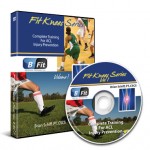Brian Schiff’s Blog
Injury Prevention, Sports Rehab & Performance Training Expert
I find that many patients and clients lack dynamic shoulder and pillar stability. Assessing this with tall plank arm taps or tall plank Y reaches can tell you a lot about one’s ability to stabilize and resist gravity in single arm support. In light of the insufficiencies I see, I prefer to use exercises that encourage integrated shoulder, torso and hip stability.
Improving shoulder and torso stability is important for overhead athletes, wrestlers, MMA competitors as well as those with any shoulder instability. This exercise is a great way to build dynamic stability and postural stability.
Click here to read my entire online column for PFP Magazine on this exercise including progressions and regressions. I think you will find this movement both challenging and rewarding for you or your clients.
Today through the end of Memorial Day I am offering 50% off my entire product line of e-books and DVDs on my website. So if you or your friends and colleagues are looking for information on rotator cuff pain, frozen shoulder treatment, ACL prevention, or programs to eliminate knee pain in runners or those with osteoarthritis, now is the time to grab one of my guides.
Visit http://www.brianschiff.com/Products.asp to see my catalog of products and simply enter the code BFIT50 in the coupon box at checkout. The sale will end Monday at midnight.
This exercise is intended for advanced users who want or need to increase shoulder, core and hip stability, while also seeking to improve hip disassociation. The core must function in an anti-extension and anti-rotation fashion throughout which is a safe and effective way to target those muscles while also providing a demanding strengthening exercise for the upper body and hips.
With that said, sufficient upper body strength is a must for this exercise. Clients with wrist pain/weakness or elbow and shoulder pathology should only perform this exercise provided they have are symptom free and have moved through the following progressions. In many cases, it is best to start with tall planking and leg lift progressions on the floor before trying this exercise.
The video below will review the exercise in one of my latest columns for PFP Magazine.
Have you ever experienced a significant injury? If so, do you remember wondering if you would ever be whole again? Pain, fear and the inability to do your sport or physical activity can cripple the human spirit.
Over my 21 years as a physical therapist and fitness professional, I have witnessed how powerful the mind is and how critical it is to have the right mindset to overcome physical obstacles. Some people are mentally stronger than others – period. With that said, adversity and pain has a way of testing the spirit and will of an individual.
In any given week, I see at least 5-10 patients rehabbing an ACL injury. The injury, surgery and rehab is physically and mentally grueling. The injury itself takes the athlete away from his/her passion or sport immediately, while presenting them with a long path back to full health. Many suffer an identity crisis as they become isolated and away from their peers. Physical therapy that fully restores function is a must in this group of patients. For more on what complete ACL rehab looks like, click here to read one of my previous posts.
Fear of reinjury and persistent knee symptoms are common reasons for a lack of return to play after ACL reconstruction. Click here to read an abstract regarding kinesiophobia in this group of patients.
With any injury, it is only natural to worry about the outcome. Clients often wonder quietly whether they will be able to return to their previous level of play. In this post, I want to talk about the elephant in the room for patients coming back from an injury, and that is a legitimate fear of reinjury.
It is that time of the year again. Everyone wants to lose weight and trim their waistlines. Abs, abs and more abs, right? I am all about some core training, but I am always concerned with some of the ab variations that I see commonly used at the gym and in group fitness environments.
Many exercise enthusiasts have tight hip flexors and poor abdominal control. Sprinkle in a history of low back pain or a prior disc injury along with straight leg abdominal exercises and now you have the perfect recipe for a possible back injury. Why is that? Well, the psoas originates from the lumbar spine and attaches to the lesser trochanter on the hip.
In the picture above, you can see how the muscle impacts the spine and hips. As you lower your legs toward the ground during an ab exercise, there is a reverse muscle action that takes place and resultant anterior shear force exerted on the lumbar spine. When the abdominal muscles cannot resist this motion, the lumbar spine hyperextends.
Many people will even report feeling a pop in the front of the hip while doing scissor kicks, leg lowering or throw downs. In many cases, this may be the tendon running/rubbing on the pectineal eminence. Unfortunately, long lever and/or ballistic abdominal exercises with inherently poor core stability/strength, fatigue and gravity working against you will create significant load and strain on the lumber spine. Ever wonder why you wanted to put your hands under your back while doing 6 inches? Your brain is trying to flatten the spine using your hands as it knows the hyperlordotic position is uncomfortable and threatening.
In light of this, I put together a little video for PFP Magazine revealing a safer way to work your abs and prevent undue stress and strain on your back. Check it out below.
Keep these modifications and progressions in mind the next time you hit the gym or a boot camp class focusing on core/ab training.





